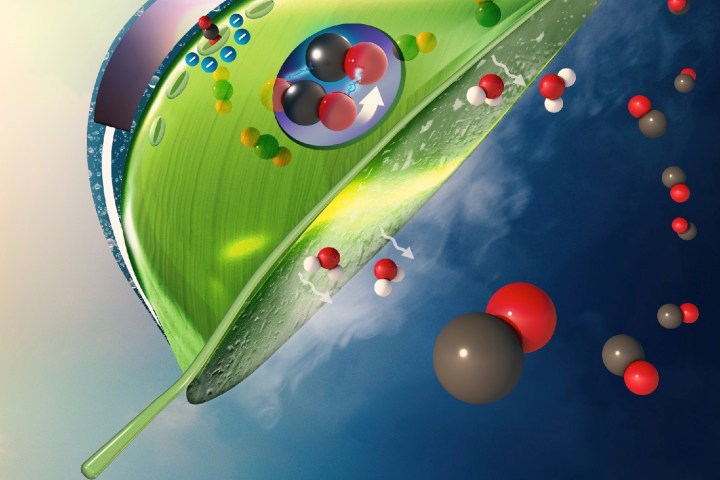
We’ve previously covered artificial soil, cyborg plants, and robot bees. Why not high-tech artificial leaves as well? That’s what engineers from the University of Illinois at Chicago recently invented — and they could prove up to 10 times more efficient than the real thing when it comes to converting carbon dioxide (CO2), via the process of photosynthesis. The results could both clean up our air and provide a cost-effective type of fuel.
While there have previously been attempts made at developing artificial leaves, these have been lab experiments involving carbon dioxide held in pressurized tanks. They, therefore, do not function like real leaves with the ability to pull CO2 directly from the air. That means that, while promising in lab settings, they can’t easily be applied in the real world. This is where the new University of Illinois artificial leaf hopes to differ. Its leaf comprises both light absorbers for harvesting sunlight, in addition to all-important integrated carbon capture units which function like stomata, the tiny openings in leaves which allow them to breathe.
“[In our work], we proposed an architecture of a bio-inspired, artificial leaf that consists of artificial stomata made of an anion-exchange membrane that captures CO2 from the air by releasing water, and an artificial photosystem made of light absorber coated with catalysts that convert captured CO2 to [carbon monoxide] using sunlight,” Meenesh Singh, assistant professor of chemical engineering in the UIC College of Engineering, told Digital Trends. “These artificial leaves function exactly like natural leaves by absorbing CO2 from the air and converting it to fuels, while releasing O2 (oxygen) and H2O (water) to the atmosphere.”
Singh suggests that the leaves could be used for the large-scale capture and conversion of carbon dioxide. Having approximately 360 leaves — each one 1.7 meters in length and 0.2 meters wide — in a 500-meter square area could produce 0.4 tons of carbon monoxide per day. This would cost around $185 per ton. For comparison, the market price of carbon is close to $650. The artificial leaves would also have the neat effect of reducing CO2 levels in the air within 100 meters by 10 percent per day.
A paper describing the research, titled “Assessment of Artificial Photosynthetic Systems for Integrated Carbon Capture and Conversion,” was recently published in the journal ACS Sustainable Chemistry and Engineering.


